DSP
Mega Power!
Shiuming
Lai talks digital with Oliver Kotschi of
Frontier Systems
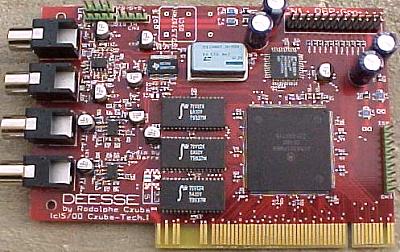
Shiuming: Oliver, please tell
us about the origins of the Deesse DSP card
and what your company is hoping to achieve
with it in the long term.
Oliver: We all know with
the end of the development of the Milan
2 came the end of Deesse, which Rodolphe
Czuba did not want to build and sell anymore
so he offered the Deesse prototype and rights
on his web site for sale.
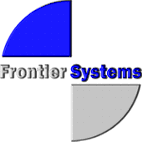 Deesse was originally
designed for a modern PCI computer like
Milan 2. Therefore Deesse was designed completely
in 3.3V and we added a little circuit to
run Deesse with existing computers that
only support a 5V PCI bus. Deesse was originally
designed for a modern PCI computer like
Milan 2. Therefore Deesse was designed completely
in 3.3V and we added a little circuit to
run Deesse with existing computers that
only support a 5V PCI bus.
OK, I have
to tell you something about myself first
so you will understand my motivation. Several
years ago I bought one of the first Falcons
in Germany to make music with Cubase Audio.
I always loved this compact and innovative
computer which is still in use in my little
home recording studio. From the beginning
I hoped that this system would become successful
and always looked forward to further developments.
Today you can clearly see the frontiers
for music software development on the Atari
platform. Of course we now have some new
faster computers like Hades and Milan but
these computers are still no alternatives
for Falcon users. Fact is: One very important
reason for this situation is the Falcon's
integrated DSP which allowed very serious
and universal software development because
you can use this DSP additionally for audio
computing while the CPU can manage the normal
things. This allows the programmers to create
a very effective computing time sharing.
So it was
clear to me, Deesse should be the reason
for me to buy a new Atari computer. After
a period of thinking I decided to contact
Rodolphe for Deesse. At the same time I
contacted several active Atari developers
and asked them for help. Now it looks to
me that we have the chance for a new era
for Atari systems. Our plan is to support
all systems which make sense like Falcon,
Hades, Milan or perhaps Atari TT or any
further new Atari clone up to emulators
on Apple or PC systems. Falcon, Hades and
Milan support will be for sure and of course
support for the new XTOS computer which
is at the moment in heavy development. Deesse
- or more specifically a DSP - should become
standard on Atari systems. If we can achieve
this we will have the chance to exist against
the mainstream computers.
Shiuming: Where do you believe
is the market for this DSP solution? What
software and applications do you foresee
taking advantage of this technology?
Oliver: I see the use of
such a DSP solution not only for specialised
music software but more general multimedia
applications. Such software combines graphic
and sound applications which you cannot
divide anymore. Even such software is missing
on Atari systems - of course we have wonderfully
coded applications like Aniplayer, FalcAMP
and many others but their development have
reached a point where only small enhancements
are possible. We will try to blow up these
frontiers and give such programmers the
possibility to develop in new dimensions.
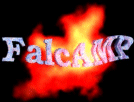
There is
also still a lot of great Falcon graphics
software which makes use of the internal
DSP. Such software like Whip! (a virtual
light machine like used in Atari's Jaguar
CD-ROM) or Smurf (fantastic fast special
graphic effect software) or see the many
demo coders who create very impressive graphical
effects with the use of a DSP. The unique
point is this combination of such multimedia
features and we can use this on many existing
platforms without a change - on all platforms
where Deesse is installed. Not to forget
internet browsers which could use the power
of the DSP for decompressing or scaling
and transforming a graphic... This would
mean a great speed up for surfing on existing
and forthcoming Atari compatible hardware.
Also not to forget specialised applications
like hard disk recording and other music
applications.
Shiuming: What makes Deesse
better than simply writing drivers for one
of the many popular and easily available
PC cards like the Creative Labs SoundBlaster
Live! series?
Oliver: First of all Deesse
is like real Atari hardware and was developed
for Atari compatible computers. If you hold
Deesse in your hands you can feel the spirit.
You cannot compare Deesse with such bulkware.
Deesse has a smart and clever design which
gives us all of such PC cards and of course
much more. Deesse uses one of the most serious
DSPs from Motorola which is completely freely
programmable (Not fixed program DSP like
most PC gaming cards - Ed). You can find
such DSPs today only on very expensive high-end
audio system cards which are used in many
modern music studios around the world. You
see, Deesse is much more than a sound card.
We have the
possibility to redesign or to develop hardware
interfaces which are special Atari computer
related, because we own the rights and you
can access all developer documents for free.
We are much more independent than if we
were only writing drivers for popular PC
cards.
You can see
many hardware and software developers had
to learn what this means. For example at
moment Milan is running into problems again
because the graphics card has run out of
production, or look at the ROM port Ethernet
adapter from Elmar Hilgart. He has to search
for a new solution because of the same problem.
Also the silly reason for the end of the
Milan 2 is apparently a special chip which
has run out of production. Deesse is isolated
from such problems. We would be able to
resolve all problems even if Motorola died
(God save Motorola).
Shiuming: Do you feel confident
because the Atari programmer base has an
established foundation in DSP coding due
to the Falcon?
Oliver: Yes, I'm confident
and I know that many Falcon programmers
love the DSP and its ability to power software
which you can still call up-to-date. The
only disadvantage and of course most wanted
thing is simply more power. For many of
them Milan was not a good choice because
of the few advantages. Now with Deesse many
of these excellent programmers will have
a wider choice of hardware.
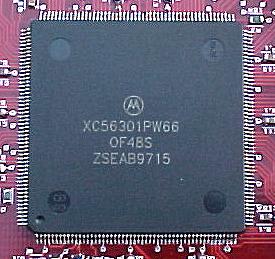
Deesse is
desigened especially for this empty space
between a Falcon and all new TOS computers
like Milan, Hades or all planned new computers
like the XTOS project. This represents a
great advantage for them and the users because
they can program for all Atari DSP computers
without losing the Falcon connection. For
example, software could run on both the
Falcon and Milan. So you can see this means
we can feel confident of much great new
software in the future and today I can tell
you that I'm right. We already convinced
important programmers to help us with special
code or to rewrite their software for native
Deesse support. This is very important because
we can't develop everything ourselves.
Shiuming: Most of these programmers
code DSP for fun, though a few have turned
their talent towards commercial and other
applications. Will a new, much more powerful
DSP system of the same core family bring
the same progress in productivity software
development?
Oliver: Of course I hope
so. The current situation is not good for
sure but we still have the chance to start
a new generation of software development.
I talked with many of active software and
scene coders and I know their wish to program
more serious and powerful software. The
only barrier is the current limited hardware.
For serious software you can't use hardware
which is out of production, and you should
have the potential to use more than one
hardware platform unlike the Falcon-only
DSP applications we have.
I agree with
you that most of the programmers code for
fun but don't you also think that a distributed
hardware platform means more fun for them?
Or why shouldn't fun start turning into
serious development if we give them the
basic tools? I think we should give them
the chance to prove this. A very important
advantage of choosing the DSP56301 is the
object code compatibility with the Falcon
DSP. This will be of course unimportant
for new software but this will be much easier
to adapt existing software and run it with
more speed on Deesse. Many programmers would
prefer to program on hardware which they
already know. Therefore I think Deesse will
give programmers a familiar enviroment which
they will easily learn.
Shiuming: Stephan Wilhelm's
Startrack VME audio card has now been discontinued
as a consequence of Milan 2's demise. During
the latter period of its commercial life
it shipped with a DSP56002/66 module, which
some companies like SoundPool supported
with some tweaks. Are you going to actively
encourage programmers and companies to adapt
their existing packages to Deesse?
Oliver: We will do this
but we also know it can be difficult to
convince companies which have turned away
from the Atari hardware platform. Our strategy
will be a combination of convincing active
and inactive programmers and to develop
our own new software for the Deesse audio
card. We hope we can show in this way what
will be possible with such modern hardware
and to convince these companies to restart
the development of new software. One of
the most important arguments is certainly
the use of a much more powerful DSP than
the DSP56002 used on the optional Startrack
DSP card. The DSP56301 is two times faster
than a DSP56002 at the same clock speed
because it executes an instruction on every
clock cycle. If you simply compare the facts
you can imagine that we will surely convince
more than just active companies to support
Deesse.
In the last
few years many companies did earn not enough
money to develop new software. We understand
this bad situation and I'm sure we now have
the chance for a new beginning but we must
have the support from the users to give
such companies hope to invest time and money
in new developments.
We know that
we will not be able to earn money at the
beginning of the project. This is not even
our main objective but we want to enable
this for many companies wanting to develop
for our system. It's just a new start.
Shiuming: Startrack was highly
desirable but also unaffordable to most
home users, do you see this as a good opportunity?
Oliver: You have to imagine
that Deesse gives us a much more interesting
perspective. Deesse is much more powerful
and is designed for more universal use than
the Startrack card. Of course you can use
Deesse for the same tasks with our planned
additional hardware but the general destiny
is more a complete support for all possible
multimedia applications, professional audio
software included. Compared with Startrack
the price is of course one of the most important
advantages but you don't have to forget
Deesse was designed for a modern TOS computer.
Deesse combines the most important hardware
like a high speed DSP and an analog stereo
input and output system. All further specialised
hardware options can be easily added on
the DSP link port. This enables us to produce
the board very cost-effectively but also
means the Deesse design makes no use of
old hardware compromises like the VME Bus,
so we have the problem to find a solution
to adapt Deesse to old Atari hardware like
the Falcon or TT. For Falcon use we will
use the Eclipse PCI card. This means you
will be able to use a modern graphic card
and Deesse on a Falcon at the same time.
We will of course support the powerful forthcoming
CT60 from Rodolphe Czuba for which Rodolphe
also plans to offer a PCI interface.
Shiuming: What user applications
do you plan to ship with Deesse?
Oliver: The user applications
will be in two parts: First you will have
the drivers to use the standard features
of Deesse on your computer. All drivers
and all basic developments like our developer
kit and software interface will be free
downloads on our website.
These standard
features will be the normal audio sound
card features and a complete programmer
software interface for easy access to simple
DSP functions or most useful DSP routines
like JPEG de/compression. Secondly you will
get a complete new software package which
will take advantage of the new powerful
DSP features. I have spent several weeks
to find programmers for development of such
new software. Now I'm proud to tell you
about a close cooperation with Norman Feske
from the DSP coder group, Escape.
You surely
know him as the author of the "Whip!"
software. Norman is one of the most expierenced
DSP coders you can find today on the Atari
platform. Our software will be developed
not only by one programmer but a team. Mariusz
Buras will also do some very important development
in this software.
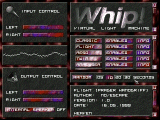 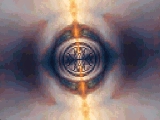
Additionally
we will get help from Sector one (Falcamp).
Of course a basic software plan already
exists but you have to understand that I
cannot give you more detailed information
yet. The only thing which I can tell you
is that the software will be a real never-seen-on-Atari
multimedia application with graphical and
enhanced sound features, and as I already
said the software will show you the real
power of Deesse.
For the first
time you will be able to have the advantage
of such software on more than one platform
like the Falcon. By the way, on a Falcon
the software will also take advantage of
the existing DSP. This multi-DSP use is
one important strategies we will use from
the beginning.
Shiuming: Can you tell us
anything about DSP development software,
how you'll assist developers, and how Deesse
will be integrated with the Atari operating
system? Will Falcon compatibility be a main
goal?
Oliver: As I bought the
Deesse design from Rodolphe I had many more
ideas than simply selling the card. Today
my ideas become closer to reality. We develop
in several important parts. For details
about our driver software you can read the
first draft of our enhanced software interface
on our web site. It's called the AIMED (Atari
Interchange Multimedia Enhanced Device)
interface. AIMED will be a new standard
for DSP programming on all Atari systems
which support a DSP, this means not only
for our Deesse card. At moment AIMED is
based on three main modules like DSP Block
mode, multiple DSP support and an easy programmer
interface. But we will expand AIMED for
an additional special programmer mode which
will be dedicated to advanced programmers
who want to code special applications based
on special features of a DSP.
 One of the most important
reasons for this development is the future
compatibility of new software. You will
be able to run such software on several
new DSPs and of course on the original Falcon
DSP. The functions will only depend on the
power of the host system. From the beginning
of the Deesse card project one of the most
important things should be an emulation
mode of the original Falcon DSP. But this
would only be interesting for improperly
coded software. All other software will
run on Deesse with only small changes because
of the object code compability of the DSP56301.
Now we prefer to develop a comfortable software
interface and we think this will be much
more important than only trying to support
old software. One of the most important
reasons for this development is the future
compatibility of new software. You will
be able to run such software on several
new DSPs and of course on the original Falcon
DSP. The functions will only depend on the
power of the host system. From the beginning
of the Deesse card project one of the most
important things should be an emulation
mode of the original Falcon DSP. But this
would only be interesting for improperly
coded software. All other software will
run on Deesse with only small changes because
of the object code compability of the DSP56301.
Now we prefer to develop a comfortable software
interface and we think this will be much
more important than only trying to support
old software.
Of course
we will support all interested programmers
to change their software for Deesse compatibility,
this will be the only way to use the enhanced
power of Deesse for such applications. Because
of this important development you must understand
that I can't tell you any details but I
can tell you that we also plan to include
with this interface some more important
programming tools so you can be sure that
we will have a complete programmer environment
for free use.
Shiuming: What happened to
the DSPower 56002 card for Milan shown at
the Neuss Messe, Germany, in April 1999?
Oliver: I don't know.
Shiuming: Thanks to the use
of the DSP56301 in some major professional
audio products like Soundscape's R.Ed HDR
and Mixtreme PCI card, some famous studio
equipment manufacturers have developed software
models of their respected effects and other
processing hardware in the form of DSP56301
algorithms. Will Atari software be able
to make use of these algorithms, considering
the hard work is already done?
Oliver: Basically yes. But
you have to consider that Atari machines
are a niche system and we will need new
complete hardware to survive. The problem
with such companies is that they keep their
algorithms secret or we have to pay a lot
of money to use them. You will never get
this for free. But we will try to convince
such companies to support us. Perhaps if
we get new Atari compatible hardware in
the future such companies will take interest
in supporting us.
Fortunately
there are many existing solutions for free
so our first aim is to use them fully. You
should not undervalue this free software.
Look at the Linux world, they live from
professional free basic sources. Another
fortune is of course most important solutions
exist for Atari computers like MP3 encoding
or decoding, you can even find a complete
modem emulation for the Falcon DSP (which
was created by Eagles Software to communicate
with a weather satellite). Especially audio
software with many basic algorithms like
audio effects (EQ, hall, surround and all
additional effects up to denoising algorithms
like used in Steinberg's "Clean")
also exist on our platform thanks to the
Falcon's DSP.
Shiuming: As much as the Falcon
proved how DSP can enable real-time audio
and video manipulation, it is strictly limited
to a single DSP. Like other modern DSP solutions
primarily designed for the audio market,
the Phenix 060, from which Deesse is derived,
had a scalable DSP system. Now we can see
Deesse in prototype form. How will it scale?
Extra Deesse cards or dedicated DSP farm
cards, as suggested during the active development
of the Phenix?
Oliver: From the software
view we will be absolutely free in scalability.
This will be very important in the future
or if we want to support Deesse with the
original Falcon DSP at the same time. From
the hardware view we have a freely programmable
high speed interface on Deesse called DSP
link for external hardware. This interface
is based of one of the enhanced "ESSI"
connectors on the DSP56301 (for further
details please refer to the official DSP56301
manual at the Motorola web page). This allows
us to develop and connect all we want for
this powerful interface.
Our first
step will be to develop the most wanted
professional outputs for this port but we
will also be able to connect a additional
DSPs or a multi-DSP card. The first scaling
solution will be using two or more Deesse
cards in one system. If we have success
with Deesse I promise you that further development
will happen.
From my personal
view I do want something like such DSP farm
cards but we mustn't forget the most commonly
needed things on our platform which means
a general development to support many users
to take advantage of a modern DSP solution.
Shiuming: What about possibly
using the DSP farm card developed by Soundscape,
Mixpander?
Oliver: Hmm, the Mixpander
cards are surely powerful cards for current
high-end audio systems. For us to use such
a card means to develop very close to this
hardware. I mean we would not be able to
support this without closer support from
Soundscape and we have to know all hardware
details about this card because we could
not use their existing developer software
directly on the TOS platform. Probably would
that mean no chance, and additionally you
have to see which users would buy such a
card at the moment. I think it is not yet
time to think about it but I imagine that
we could build such a DSP farm card as an
expansion for Deesse perhaps with a direct
DSP Link connection.
In my opinion
building a DSP farm card especially for
Deesse is much easier and more effective
than adapting an existing solution. Of course
I should say never no but without helping
hands such a project is impossible. One
very good thing is of course to know of
such solutions and we can learn about the
design for a proprietary Atari solution.
Shiuming: To complement my
Falcon I have a CreamWare Pulsar II DSP
audio card in a Windows box. 6x 60MHz Analog
Devices 32-bit SHARC devices. Last time
I checked these chips cost $10US a piece
in thousands quantities. Is Motorola's DSP56301
a similar commodity, and would it be a feasible
long-term strategy to place more DSPs on
each card to exploit economy of scale and
achieve more power-to-price ratio? A thousand
DSP chips may sound like a lot, but it's
much less if several are used for each card.
Oliver: This is a very interesting
idea but we have to plan for the situation
of reality. The small Atari market doesn't
allow us to develop so ambitiously at the
beginning.
Shiuming: There are two fundamental
aspects of any processing system. One is
of course the actual processing function,
and the other is I/O. Besides interfacing
with the host internally to provide fast
processing of static data (graphics rendering,
for example), one of the biggest attractions
is the ability to process live external
data streams. To this end we can clearly
see two pairs of audio connectors. What
else is possible?
Oliver: We actually plan
to add a speaker power supply connector,
a headphone output and a microphone input
connector for standard equipment.
Shiuming: Will these be designed
by an audio specialist? I recently did some
listening tests with the Creative SoundBlaster
Live! and found the microphone circuit to
be extremely sensitive to interference.
When it's not muted, there is greatly increased
background hiss and moving the mouse (for
example) causes a loud buzzing noise in
the analogue output. What measures will
be taken to avoid such typical weaknesses
in common so-called multimedia sound cards?
Oliver: At moment we haven't
a solution. I will discuss this with Elmar
Hilgart. I think he will find a solution
for this. But I don't want to promise you
a professional microphone input because
I want a complete solution for normal users.
This means for sure without phantom power
and probably only a asymmetric connector.
A professional input will be available as
soon as we start the development of the
digital in/outs on an optional card.
By the way,
for my personal choice I prefer a separate
microphone preamp. In my private music studio
I use a "Mindprint En Voice" with
the optional digital in/outs.
The problem
is if you want a professional solution you
have to use a symmetric input. This means
unfortunately the use of a professional
microphone, which is not conventional. And
we cannot require this from the users. Perhaps
we can find a solution.
For digital
in/outs we will develop a small additional
card which will connect to the DSP link
port on Deesse. We will be able to support
multi digital connectors like the ADAT standard
or analog outputs like seen on the Falcon
from Line Audio (JAM) or Soudpool's FA8.
For this additional hardware we still want
to find a solution. At the moment I can't
say if we will use existing hardware or
develop our own solution but I can promise
you that there will be a solution or the
best way would be a combination of that.
I think it's
time to say that we would be very happy
for any help any offers of active Atari
hardware developers who want to support
us in any way. We would be glad about that
because it is clear that we all have to
co-operate to get our systems completely
up-to-date (not only in our Deesse project).
In this respect I want to thank Elmar Hilgart
(YAMI mouse interface) for his help in all
hardware-related things.
Shiuming: With Pulsar II,
CreamWare modularised the design of the
PCB. Instead of making two separate cards,
one "full" Pulsar with the I/O
and DSPs, and one "Sonic Rocket Booster"
with just DSPs and a plain PCI back-plate,
a single PCB is now used, and the entire
I/O section is on a daughter card which
doesn't require any more spare PCI slots.
It's just like fitting a CD-ROM drive into
an empty 5.25" bay in a PC. The space
is already there. What do you think of this
idea? Not everyone buying extra DSP cards
needs extra I/O.
Oliver: This is surely an
interesting idea. Particularly because we
have plans for further hardware development.
But for this solution I would prefer to
add digital outputs as standard on the Deesse
main board. I don't want to promise this
but we are able to redesign the Deesse layout
for all situations we want. I think the
solution which you talk of would be very
interesting as soon as we are able to expand
our development for special audio support.
At moment the Deesse design is for sure
the best balance between functionality and
design effort.
And I promise
you that I will remember your ideas and
we will of course look over the horizon
to do good work. I'm convinced that we don't
have to ignore existing solutions because
this is often the best way even for new
developments.
But you mustn't
forget that Deesse should be a solution
for all Atari computers and for all normal
users who are not interested in special
audio-only hardware. Such an idea of using
a DSP in a computer system is still not
reality but we are now on the way to do
that.
Another point
is the size of the Deesse board. We want
to keep the size very small because we want
to give users the possibility to use a case
of their choice. For example you could fit
Deesse in a C-LAB Falcon MKX case with an
Eclipse.
|
![]()
![[ Advert ]](images/banner.gif)
![]()
![]()